
Attending the best affordable physics degree programs can help undergrads accelerate toward natural science careers studying matter and its motion. Cheap physics degree programs have kept prices stagnant during times of rising tuition to welcome STEM majors of all financial backgrounds. Instead of money, physics majors at low-cost colleges focus every joule of their energy on learning the mechanics of particles. From biophysics to geophysics, understanding the laws that govern our universe is helpful in diverse fields. The American Physical Society reports there were 8,813 physics bachelor’s degrees awarded in 2017. That’s a whopping 131 percent increase from the physics enrollment numbers in 1999. According to the AIP Statistical Research Center, the United States has 750 degree-granting physics departments. Choosing an affordable accredited college for physics degree programs will immerse freshmen in budget-friendly courses that teach the fundamental principles by which nature operates.
Our Methodology
First, Affordable Schools sought to amass tuition data on top-value physics degree options that can push students’ momentum forward into an in-demand STEM career. We accessed the National Center for Education Statistics’ College Navigator database to begin our research. We checked the boxes to locate only four-year bachelor’s programs in physics disciplines at public or private U.S. institutions. Our team reviewed the latest costs of attendance for 2018-19 to arrange an initial pool of 50. We started narrowing down to the most economical physics degree opportunities based on in-state tuition. Though not a factor, out-of-state prices were recorded for reference. We built a rubric to prioritize colleges with $7,500 or lower annual rates. We graded each college with one to three points based on their cost.
Points:
Under $7,500: 3 Points
$7,500 to $15,000: 2 Points
$15,001 and Up: 1 Point
Second, the AS Staff judged the education quality at affordable colleges for physics degree programs by finding the student-faculty ratio. The College Navigator tool lists this proportion to display how many learners each professor is responsible for. Student-faculty ratios prove whether the university has a small or large average class size. Physics departments with big lecture halls often don’t provide the personalized learning this discipline requires. Small courses ensure each undergrad is actively involved in hands-on experiments. Experienced physicists are more accessible to offer curriculum and career advice. Low student-faculty ratios of 10:1 and less are linked to higher internship or co-op rates too. Our team again assigned each physics program with one to three points based on interactivity.
Points:
10:1 or Less: 3 Points
11:1 to 15:1: 2 Points
Greater Than 15:1: 1 Point
Lastly, Affordable Schools chose to consider the average graduation rate for every physics department. On the College Navigator, we scrolled down to retention and recorded the Class of 2018 graduation rate. This percentage tells us how many undergrads stuck with their schooling and received their diploma within six years. Graduation rates are standard measures that indicates whether universities can keep students happy. Physics bachelor’s majors are less likely to drop out at institutions with great academics, amenities, locations, and support services. Graduation rates below 30 percent are red flags that suggest undergrads aren’t satisfied. Our researchers formed another three-point scale to grade each school’s performance. We added these points to the previous ones for a maximum total of nine. When ties occurred, we ordered the cost-effective physics degree programs from high to low in-state tuition.
Points:
Less than 30 Percent: 1 Point
Between 30 and 50 Percent: 2 Points
More than 50 Percent: 3 Points
Ranking the 15 Best Affordable Colleges for a Physics Degree
15. North Dakota State University
Fargo, ND

Total Points: 7
Program Website
North Dakota State University is a public, doctoral-granting Red River Valley Research Corridor institution. It was featured on the cover of Soft Matter in spring 2017. It enrolls 14,358 students. In 2018 it won an Outstanding Society of Physics Students Chapter Award for Zone 11. North Dakota State was the 2018 ARTBA Steinberg Research & Education Award recipient. The U.S. News & World Report ranked North Dakota State 213rd for science programs. It was named:
- America’s 41st best research center by the National Science Foundation
- 457th top university by Times Higher Education.
The College of Science & Mathematics offers an inexpensive B.A./B.S. in Physics focused on studying condensed matter. The 122-credit, HLC-accredited curriculum offers three tracks:
- Computational Psychics
- Optical Science & Engineering
- Physics Education
Students can also:
- enter the Innovation Challenge
- intern at the Mayo Clinic
- double major in Electrical Engineering
- pursue the Accelerated 4+1 Master’s
- apply for the Sinha Family Scholarship
- research in the Fluid Mechanics Lab.
Degree Options:
Bachelor of Arts in Physics
Bachelor of Science in Physics
In-State Tuition: $9,414
Out-of-State Tuition: $13,393
Student-Faculty Ratio: 20:1
Graduation Rate: 58 percent
14. Henderson State University
Arkadelphia, AR
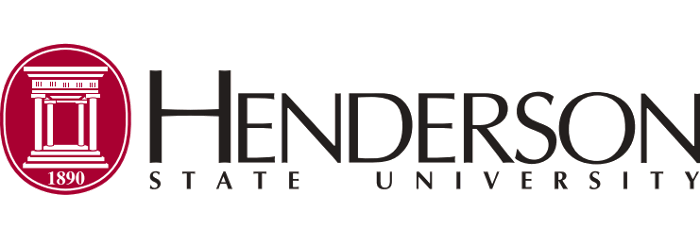
Total Points: 7
Program Website
Henderson State University is a public, four-year liberal arts school of the Great American Conference. It was established in 1890. It enrolls 3,584 undergraduates from 25 countries. It operates the Reddie MakerSpace Lab at its STEM Center in Ross House. In 2019, Henderson State received the Marsh W. White Outreach Award. It earned the Society of Physics Students’ Blake Lilly Prize for its Science Olympics in 2018. The U.S. News & World Report ranked Henderson State 91st in the Southern Region. It was named:
- America’s 259th best dining center on Niche
- 350th top value in The Economist
- 454th highest-paid physics grads on College Factual
The College of Arts & Sciences offers an inexpensive B.S. in Physics or B.S. in Physics Education. Both120-credit, HLC-accredited progrms share core 16-week courses like:
- Quantum Mechanics
- Electrodynamics
- Cosmology
Undergrads may also:
- join Reddie Robotics Club
- utilize the Planetarium’s Digitalis Epsilon System
- join Gamma Beta Phi
- semester abroad in Germany
- intern at Gurdon High School,
- mentor for the STEAM Academy.
Degree Options:
Bachelor of Science in Physics
Bachelor of Science in Physics Education
In-State Tuition: $8,530
Out-of-State Tuition: $10,180
Student-Faculty Ratio: 13:1
Graduation Rate: 35 percent
13. Eastern Illinois University
Charleston, IL
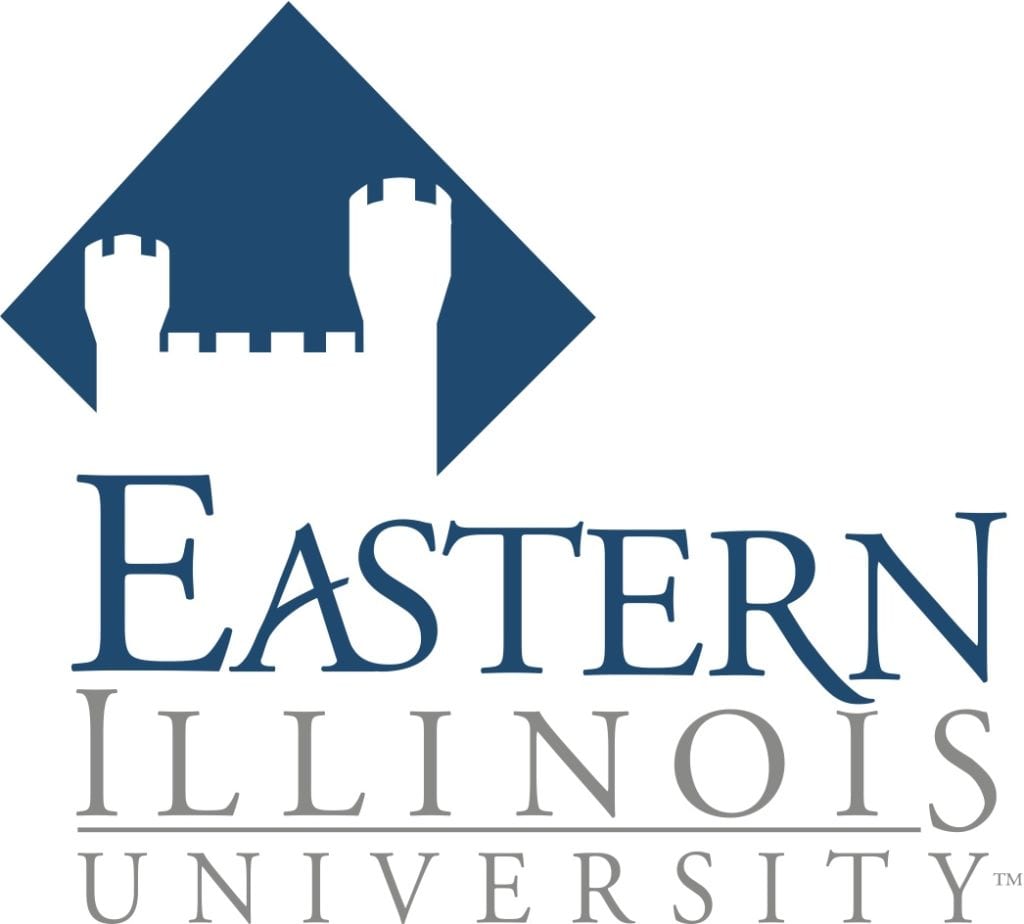
Total Points: 8
Program Website
Eastern Illinois University is a public, master’s-level OVC member. It enrolls 7,415 students in 93 inexpensive programs. It houses a 16-inch Schmidt Cassegrain telescope at its Observatory. In 2011, Eastern Illinois was the Carnegie Foundation Illinois Professor the Year Award recipient. The university earned recognition from the American Association of Physics Teachers in 2017. The U.S. News & World Report ranked Eastern Illinois 38th in the Midwest. It was named:
- America’s 314th most athletic college by Niche
- 464th top school by The Wall Street Journal
- 54th best value by College Factual.
The College of Liberal Arts & Sciences admits freshmen with an average 3.08 GPA into the low-cost Physics B.S. program. The 120-credit, HLC-accredited sequence offers four emphases:
- engineering physics
- computational physics
- astronomy
- teacher certification
Majors might also:
- conduct Laser Lab projects
- utilize the Thin Film Deposition System
- enter the Sandra & Jack Pine Honors College
- join the Society of Physics Students
- explore Zagreb.
Degree Options:
Bachelor of Science in Physics
In-State Tuition: $11,803
Out-of-State Tuition: $14,023
Student-Faculty Ratio: 14:1
Graduation Rate: 58 percent
12. Tougaloo College
Tougaloo, MS

Total Points: 8
Program Website
Tougaloo College is a private, Protestant historically Black TMCF member founded in 1869. It enrolls 900 undergraduates across 29 affordable degree programs. It participates in the Minority Business Development Agency’s STEMpreneur Challenge. In 2018, Tougaloo was awarded the National Science Foundation Catalyst Project Grant. Its Physics Department won the 2015 Hendrick Vanguard Award for Excellence in Teaching Award. The U.S. News & World Report ranked Tougaloo College the 12th best HBCU. Tougaloo was named:
- America’s 23rd best value by Educate to Career
- 21st top liberal arts school by Washington Monthly
- 429th hardest college by Niche.
The Division of Natural Science provides a top-value B.S. in Physics and B.S. in Secondary Physics Education with 7-12 teacher certification The low-cost, 124-credit, SACS-accredited programs span eight semesters with classes from Electricity & Magnetism to Educational Technology. Students may also:
- conduct research with the Nano-Science Group
- pledge Alpha Lambda Delta
- join Science Club
- present at the MC-TC Undergraduate Symposium
- venture to Jamaica
- enter the Upward Bound Program.
Degree Options:
Bachelor of Science in Physics
Bachelor of Science in Secondary Physics Education
In-State Tuition: $10,600
Out-of-State Tuition: $10,600
Student-Faculty Ratio: 9:1
Graduation Rate: 35 percent
11. University of Nebraska at Kearney
Kearney, NE

Total Points: 8
Program Website
The University of Nebraska at Kearney is an innovative public, coed NU System branch. It enrolls 5,274 undergraduates from 50 countries. In May 2020 the university opened the $30 million, 90,000-square-foot STEM Center. In 2018, Kearney earned a NASA Space Education Grant for its Planetarium. The university’s Delta Tau Delta Chapter won the 2002 Hugh Shields Award for Excellence. The U.S. News & World Report ranked the University of Nebraska at Kearney 53rd in the Midwest. It was also named:
- America’s 383rd best value in Money
- 180th best student life school by Niche
- 156th top college by Washington Monthly.
The College of Arts & Sciences offers the inexpensive Physics B.A./B.S. for curious young scientists to test the properties of natural objects. The 120-credit, HLC-accredited plan has specialty options for:
- Engineering, Astrophysics
- Pre-Meteorology
- Physics 7-12 Teaching Subject Endorsement.
Undergrads can also:
- intern at Los Alamos National Lab
- join the SPS Chapter
- apply for the Donald Liehs Endowed Scholarship
- advance into the Online Science Education M.S.Ed.
- summer in Utrecht.
Degree Options:
Bachelor of Arts in Physics
Bachelor of Science in Physics
In-State Tuition: $7,512
Out-of-State Tuition: $13,742
Student-Faculty Ratio: 14:1
Graduation Rate: 58 percent
10. Southeast Missouri State University
Cape Girardeau, MO

Total Points: 8
Program Website
Southeast Missouri State University is a public, master’s-level OVC member founded in 1873. It enrolls 10,041 undergraduates from 65 countries. Magill Hall of Science underwent a $22 million renovation which included a Magnetic Materials Lab. In 2019, Southeast Missouri won the Governor Award for Excellence in Education. The university also received a 2017 Society of Physics Students Chapter Research Award. The U.S. News & World Report ranked Southeast Missouri State 90th in the Midwest. The university was ranked:
- America’s 320th top public school by Niche
- 187th best physics value by College Factual
- 249th best university in Washington Monthly.
The College of Science, Technology & Engineering offers an affordable B.S. Physics or B.S.Ed. Physics major. The HLC-accredited sequences require 120-134 credits like Modern Physics and Experimental Methods with internship or student teaching hours. Students may also:
- participate in Electronics Lab projects
- pledge Sigma Pi Sigma
- tour Argonne National Laboratory
- join the Physics & Engineering Club
- work on the 27-acre Miller Reserve.
Degree Options:
Bachelor of Science in Physics
Bachelor of Science in Education – Physics
In-State Tuition: $7,418
Out-of-State Tuition: $13,155
Student-Faculty Ratio: 20:1
Graduation Rate: 49 percent
9. CUNY College of Staten Island
Staten Island, NY

Total Points: 8
Program Website
The College of Staten Island is a public, four-year CUNY constituent founded in 1956. It enrolls about 14,000 students from 80 countries. It’s linked with the American Museum of Natural History’s Astrophysics Department. In 2019, CSI received the Staten Island Chamber of Commerce’s Excellence in Exterior Award. The college won first prize at the CUNY-IBM Watson Social Impact Challenge. CUNY Staten Island was ranked America’s sixth best value by the Social Mobility Index and 179th top public university in Forbes.
The Division of Science & Technology offers an affordable B.S. in Physics The 120-credit, MSCHE-accredited program has February 1st and September 15th priority deadlines for starting the Astrophysics or Teaching Grades 7-12 track. Undergrads can also:
- intern at the Metropolitan Transportation Authority
- do research in the Astrophysical Observatory
- semester in Hong Kong
- enter the Energy Competition
- join the Science Club.
Degree Options:
Bachelor of Science in Physics
In-State Tuition: $7,290
Out-of-State Tuition: $14,960
Student-Faculty Ratio: 18:1
Graduation Rate: 31 percent
8. Arkansas Tech University
Russellville, AR
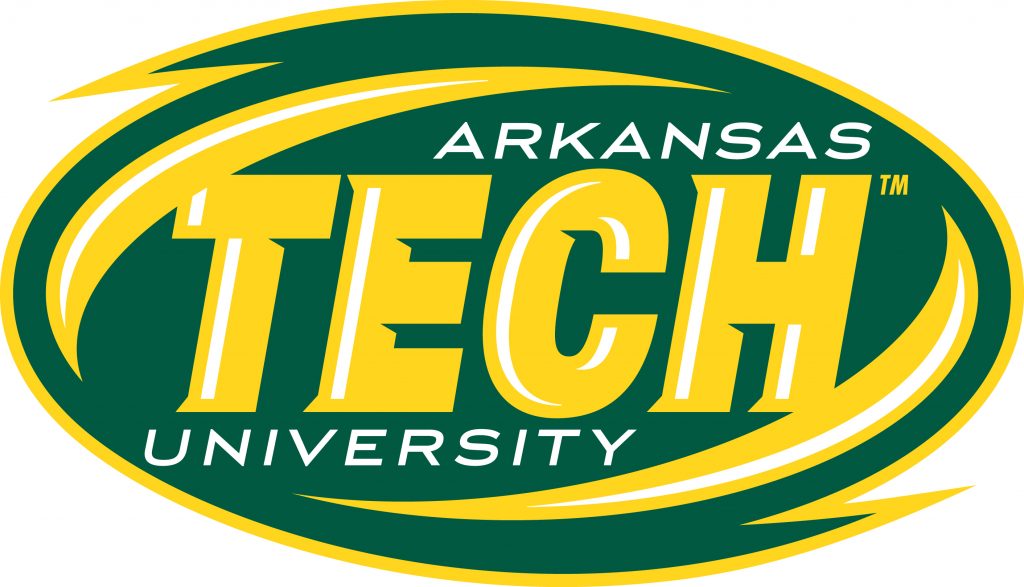
Total Points: 8
Program Website
Arkansas Tech University is a public, four-year STEM institution. It enrolls 12,000 students from 42 countries. It has hosted the Hugh O’Brian Youth Leadership Seminar annually since 1958. In 2017, Arkansas Tech won an Arkansas Academy of Science Research Grant. It earned a 2013 NCAA Division II Award of Excellence for its Goodwill Project. The U.S. News & World Report ranked Arkansas Tech University 259th for bachelor’s degrees. It was also ranked America’s 288th most community service in Washington Monthly and 463rd best academics by Niche.
The College of Natural & Health Sciences lets undergrads with an average 3.19 GPA specialize in the low-cost Physics B.S., Engineering Physics B.S. ,and Nuclear Physics B.S. majors. These 120-credit, HLC-accredited pathways share core courses like Quantum Mechanics and Thermodynamics. Students can also:
- participate in Reichert Foundation Lab projects
- intern at Dow Chemical
- add the 7-12 Teacher Licensure
- join Physics Club
- earn the Vann Kerns Scholarship.
Degree Options:
Bachelor of Science in Physics
Bachelor of Science in Engineering Physics
Bachelor of Science in Nuclear Physics
In-State Tuition: $7,254
Out-of-State Tuition: $12,678
Student-Faculty Ratio: 19:1
7. CUNY Lehman College
Bronx, NY

Total Points: 8
Program Website
Lehman College is a public, four-year CUNY constituent. It generates $16.56 million in research funding and enrolls 11,860 students. It collaborated with Con Edison to present the 2019 City of Science Festival. In 2002, CUNY Lehman received a Gold Hermes Creative Award for Inside Lehman. The college earned its first NABC Team Academic Excellence Award in 2016. The U.S. News & World Report ranked CUNY Lehman College 120th in the North Region. CUNY Lehman was ranked:
- America’s 220th best location by Niche
- 200th top value in Forbes
- 677th best university by The Economist
The School of Natural & Social Sciences offers an inexpensive B.A./B.S. in Physics that introduces students to the fundamental principles of energy. The 120-credit, MSCHE-accredited programs have a variety of electives like Statistical Mechanics and Digital Electronics. Student can also:
- join the American Institute of Physics
- do research in the Condensed Matter Physics Lab
- intern at the Kavli Institute
- enter the Paris Exchange
- be Lehman Scholars.
Degree Options:
Bachelor of Arts in Physics
Bachelor of Science in Physics
In-State Tuition: $7,210
Out-of-State Tuition: $14,880
Student-Faculty Ratio: 16:1
Graduation Rate: 49 percent
6. Missouri Southern State University
Joplin, MO

Total Points: 8
Program Website
Missouri Southern State University is a public, MIAA member founded in 1937. It enrolls nearly undergraduates from 27 countries It’s highly regarded for its $11,600 Evans Fellowship Program. In 2019, Missouri Southern won a Sigma Pi Sigma Chapter Project Award. The university was the 2019 Society of Physics Students Advisor of the Year Award recipient. The U.S. News & World Report ranked Missouri Southern in the top 79 Midwest schools. It was also ranked:
- America’s 594th most liberal college by Niche
- 383rd best science value by College Factual
- 305th top institution in Washington Monthly.
The School of Arts & Sciences offers a low-cost B.S. in Physics where undergrads learn to follow safe, unbiased laboratory procedures. The 120-credit, HLC-accredited major builds atop core courses like Thermal Physics with an Engineering or Physics Education Grades 9-12 emphasis. Students might also:
- declare the Advanced Power Minor
- pursue the Early Acceptance Medical School Program
- do research in the Penning Lab
- join Women in Science
- visit Mercedes-Benz in Sindelfingen
- intern with NASA.
Degree Options:
Bachelor of Science in Physics
In-State Tuition: $6,503
Out-of-State Tuition: $13,005
Student-Faculty Ratio: 19:1
Graduation Rate: 33 percent
5. University of North Georgia
Dahlonega, GA

Total Points: 8
Program Website
The University of North Georgia is a public, four-year Peach Belt military school.It enrolls nearly 20,000 students from 96 nations. In 2018, the American Institute of Physics named UNG number one in Georgia. The uiversity won a 2018 SPS Outstanding Chapter Award. The U.S. News & World Report ranked the University of North Georgia 22nd for Southern bachelor’s degrees. It was also ranked:
- America’s 389th best campus by Niche
- 193rd best public university by Forbes
- 94th top value in Kiplinger’s.
The College of Science & Mathematics provides the inexpensive Physics (B.S.) Major The 120-credit, SACS-accredited program ends with the Senior Seminar after hands-on courses like Principles of Physics and Calculus. Students may also:
- practice in the Astronomical Observatory
- transfer from the Physics (A.S.) Pathway
- earn the S-STEM Scholarship
- engage in the Environmental Leadership Center
- Trailblazers Club.
Degree Options:
Bachelor of Science in Physics
In-State Tuition: $4,692
Out-of-State Tuition: $13,514
Student-Faculty Ratio: 19:1
Graduation Rate: 34 percent
4. University of North Carolina at Pembroke
Pembroke, NC

Total Points: 8
Program Website
The University of North Carolina at Pembroke is a public, four-year AIHEC member formed in 1887. It enrolls over 6,000 undergraduates It is noted for its John Eric Reissner Scientific Computing & Visualization Lab. In 2013, its Physics & Chemistry Department won the UNC Board of Governors Teaching Excellence Award. It also won the 2018 AAPT Homer Dodge Distinguished Service Award. The U.S. News & World Report ranked UNC-Pembroke 226th for bachelor’s degrees. It was also ranked America’s 150th best value on WalletHub and 229th top institution in Washington Monthly.
The College of Arts & Sciences offers an affordable B.S. in Applied Physics with a Dual Mechanical Engineering B.S. option from North Carolina State. The 120-credit, SACS-accredited curriculum blends topics like:
- Optics
- Classical Mechanics
- Programming
Students can also:
- enter the Maynor Honors College
- join Gamma Sigma Epsilon
- attend the Science & Engineering Fair
- do research in the Biotechnology Center
- access the Observatory
- pursue the 3+2 Master’s.
Degree Options:
Bachelor of Science in Applied Physics
In-State Tuition: $3,418
Out-of-State Tuition: $7,418
Student-Faculty Ratio: 16:1
Graduation Rate: 58 percent
3. CUNY Brooklyn College
Brooklyn, NY
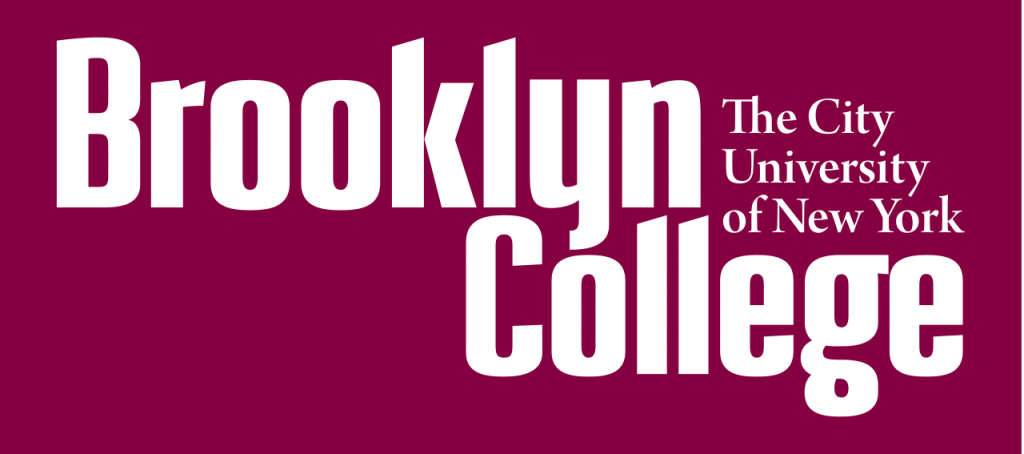
Total Points: 9
Program Website
Brooklyn College is Nobel Prize winner Stanley Cohen’s alma mater. It’s a public, four-year CUNY branch enrolling nearly 18,000 students. It operates an Electron Microscopy Vivarium at its 400,000-square-foot Science Research Center. In 2019, CUNY Brooklyn was a National Science Foundation Career Award honoree. It also earned a 2019 NYC Curriculum Development Award from Teach Access. The U.S. News & World Report ranked CUNY Brooklyn College 74th in the North Region. It was ranked:
- America’s 260th safest environment by Niche
- 114th best buy in Money
- 328th highest salary potential on PayScale
The School of Natural & Behavioral Sciences offers the inexpensive B.S. in Physics or B.A. in Physics Teacher (7-12). The 120-128 credit, MSCHE-accredited programs cover similar courses like Electrical Measurements and Atomic Physics. Students can also:
- student teach at Stuyvesant High School
- enter the Coordinated Engineering Program
- do research in the Theoretical Modeling Lab
- join the NBSSO Chapter
- utilize the Physics Department Library.
Degree Options:
Bachelor of Arts in Physics Teacher (7-12)
Bachelor of Science in Physics
In-State Tuition: $7,240
Out-of-State Tuition: $14,910
Student-Faculty Ratio: 16:1
2. Minot State University
Minot, ND

Total Points: 9
Program Website
Minot State University is a public, four-year NDUS System constituent opened in 1913. It enrolls over 3,000 students. Xcel Energy sponsors its North Dakota Higher Education STEM Program. In 2018, Minot State won the Northern Sun Intercollegiate Conference’s Elite 18 Award. It was a 2019 Center for Sustainable Materials Science Grant recipient. The U.S. News & World Report ranked Minot State 248th for bachelor’s degrees. It was also ranked:
- America’s 246th best public college by Niche
- 229th top value by College Factual
- 548th best institution in Washington Monthly.
The Division of Science has rolling admission into a low-cost Physics B.S. for freshmen with minimum 900 SAT or 17 ACT scores. The 120-credit, HLC-accredited major has physics and physical science concentrations with courses like Astronomy and Quantum Mechanics. Students can also:
- study abroad in Denmark
- review the Natural History Collection
- enter the Honors Program
- join the Science Club
- pursue the Mickey Leland Energy Fellowship.
Degree Options:
Bachelor of Science in Physics
In-State Tuition:$7,064
Out-of-State Tuition:$7,064
Student-Faculty Ratio:12:1
Graduation Rate: 46 percent
1. CUNY Hunter College
Manhattan, NY
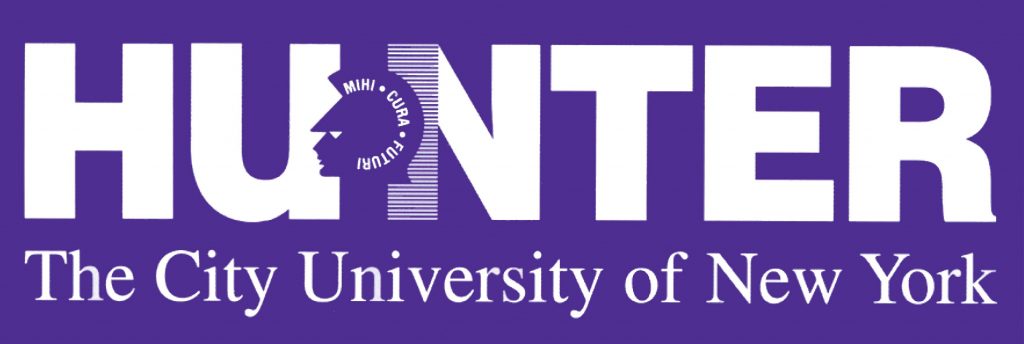
Total Points: 9
Program Website
Hunter College is a public, land-grant CUNY constituent in Manhattan, NY. It enrolls about 22,918 students from 59 countries. In 2008, CUNY Hunter earned the National Science Foundation’s Advance Institutional Transformation Grant. The Fulbright Scholar Program gave SUNY Hunter the 2013 Top Producer Award. The U.S. News & World Report ranked Hunter 16th for bachelor’s degrees. CUNY Hunter ranked:
- America’s 137th top value in Kiplinger’s
- 149th hardest college by Niche
- 99th best public school in Forbes
The School of Arts & Sciences offers an inexpensive BA in Physics. The 120-credit, MSCHE-accredited program has built-in specializations for biophysics and secondary school teaching preparation. Students can also:
- seek the Accelerated BA/MA
- join the Society of Physics Students
- conduct Ultrafast Optics & Spectroscopy Lab research
- tutor at the Physical Sciences Learning Center.
Degree Options:
Bachelor of Arts in Physics
In-State Tuition: $7,182
Out-of-State Tuition: $14,852
Student-Faculty Ratio: 12:1
Graduation Rate: 56 percent
Which Jobs are Available with an Affordable Degree in Physics?
Getting a best-value physics degree at the bachelor’s level often prepares undergrads for doctoral admission to become full-fledged experimental or theoretical physicists. Physics majors do have immediate career opportunities without attending grad school though. For instance, material scientists assist in research on the properties of products like rubber or ceramic. Meteorologists study the atmosphere to forecast weather conditions and climate changes. Optical engineers design technical equipment that controls or manipulates light. Data scientists might have physics backgrounds to better draw insights from empirical research results. Aerospace engineers utilize physics to build and test aircraft or spacecraft. High school physics teachers create lessons for teens to learn about Einstein, Newton, Curie, and more. Other potential jobs include:
- mechanical engineer
- nuclear engineer
- energy analyst
- science journalist
- natural sciences manager
- research analyst
- geoscientist,
- physics technician
How Much Money Do High-Value Physics Degree Graduates Make?
Graduating from a low cost accredited university for physics degree programs will maximize one’s return on investment in STEM careers that pay quite well. In May 2018, the Department of Labor calculated a median annual wage of $66,070 in U.S. science jobs. Physics and astronomers had an average yearly salary of $119,580. Materials scientists reaped mean salaries of $102,450. Materials engineers reported median pay of $92,390. Nuclear engineers brought home $107,600 on average. Biophysicists claimed mean compensation of $93,280. Geoscientists, including seismologists, were paid a median income of $91,130. Atmospheric scientists received an average $95,580 wage. Mechanical engineers had a mean salary of $92,800. Secondary physics teachers made a mean salary of $64,340 every 10 months. On Salary.com, physicists have compensation ranges of $61,077 to $130,389 by experience level. Median annual earnings were $76,775 for physics engineers and $105,654 for physics professors.
What is the Hiring Outlook After Low-Cost Physics Degree Programs?
Earning an affordable physics degree will provide plentiful prospects in a fast-paced STEM industry. It’s constantly seeking fresh new talent. The Bureau of Labor Statistics expects employment in the physical sciences to rise 10 percent by 2026 for 124,800 new jobs total. Physicists and astronomers will see openings jump by 14 percent. Demand for materials scientists will increase steadily by 7 percent. Hiring of petroleum technicians will rise 16 percent. Market need for forensic science analysts will jump 17 percent this decade. Biophysicists can count on faster-than-average job growth of 11 percent. High schools will hire 6 percent more physics teachers. Jobs for mechanical engineers will expand by 9 percent. The 10-year outlook for aerospace engineers projects 6 percent more positions. Civil engineers will see an 11 percent uptick. California, Maryland, New Mexico, and Texas have the most physics jobs.
AS Staff
This concludes our ranking of the top 15 best affordable physics degrees (bachelor’s).
Other Rankings of Interest:
25 Online Bachelor’s Colleges Under $10K Net Price
25 Most Affordable Online Christian Bachelor’s Colleges
25 Online Public Bachelor’s Colleges with the Least Four-Year Tuition Change
25 Online Private Nonprofit Bachelor’s Colleges with the Least Four-Year Tuition Change
25 Most Affordable Online Bachelor’s in Organizational Leadership
35 Top Value Psychology Degree Online (Bachelor’s)
15 Best Affordable English/Language Arts Degrees Programs (Bachelor’s)
15 Best Affordable Communications Degree Programs (Bachelor’s)
 The Best Colleges
The Best Colleges The Lowest Costs
The Lowest Costs The Highest Returns
The Highest Returns